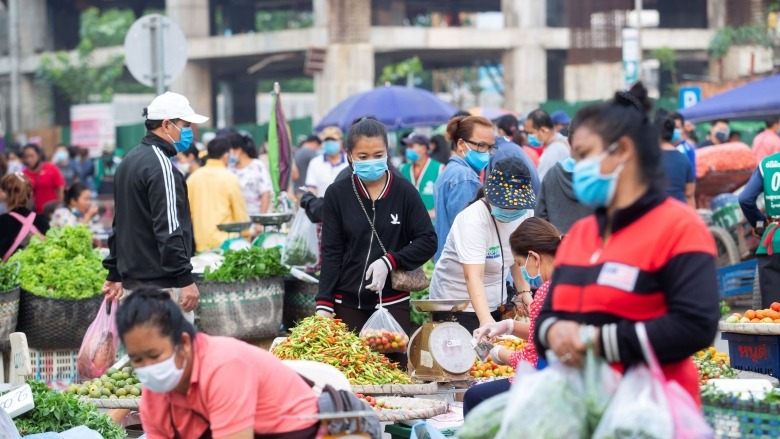The COVID-19 pandemic and its containment measures have affected livelihoods in Lao PDR. While efforts to contain the pandemic were largely successful, over 2020 and the first quarter of 2021 the negative economic impact of Covid-19 has been felt. On aggregate, the poverty rate (measured as $3.20 a day, 2011 PPP) is expected to increase by 1.7 percentage points in 2020, as compared with a non-COVID-19 scenario. All economic sectors have experienced adverse effects of varying intensity.
Declining trading volumes and tourism have put thousands of jobs at risk, threatening livelihoods. This negative economic impact has disproportionately affected informal workers, who lack social protection. Rising food prices have exacerbated food insecurity, especially among low-income households Some households have lost their main source of livelihoods while others have seen one of their main coping strategies — remittances from migrant workers — disappear.
To monitor the social and economic impacts of the pandemic, the World Bank is conducting a series of COVID-19 Rapid Monitoring Phone Surveys in Lao PDR. The resulting data help provide insights into the effects of the pandemic on household well-being. The first-round survey was conducted from June 20 to July 16, 2020, when Lao PDR had just exited the first nationwide lockdown. The second-round survey was conducted from February 26 to March 24, 2021, one year into the pandemic.
The survey questionnaire is designed to cover important themes such as knowledge of COVID-19 and adoption of preventive behavior, access to food staples, food insecurity, impact of COVID-19 on economic activities and income, coping mechanisms, and access to social assistance. The COVID-19 situation in Lao PDR has evolved since the middle of April 2021, with the emergence of clusters of community transmission throughout the country. The results of further rounds of the survey will be published as they become available.
Latest Key Results
- The labor market shows signs of recovery. Nearly three-quarters of respondents who did not work during July 2020 had returned to work by March 2021.
- Hospitality, transport, and manufacturing continue to be adversely affected while construction has rebounded.
- By March 2021, 2.6% of businesses had permanently closed while 7.4% remained temporarily closed. Half of businesses experienced a further decline in revenue relative to July 2020.
- Around 31% of households experienced a decline in household income relative to pre-lockdown in March 2020 – a significant drop from 48% of households in July 2020.
- Food insecurity remained elevated. More than half of households experienced a certain degree of food insecurity during the previous 30 days.
- 87% of respondents would receive a COVID-19 vaccine if provided for free.
- 16% of respondents reported that their households benefited from personal income tax exemption while 23% of family businesses benefited from business tax relief measures.
Source: World Bank






